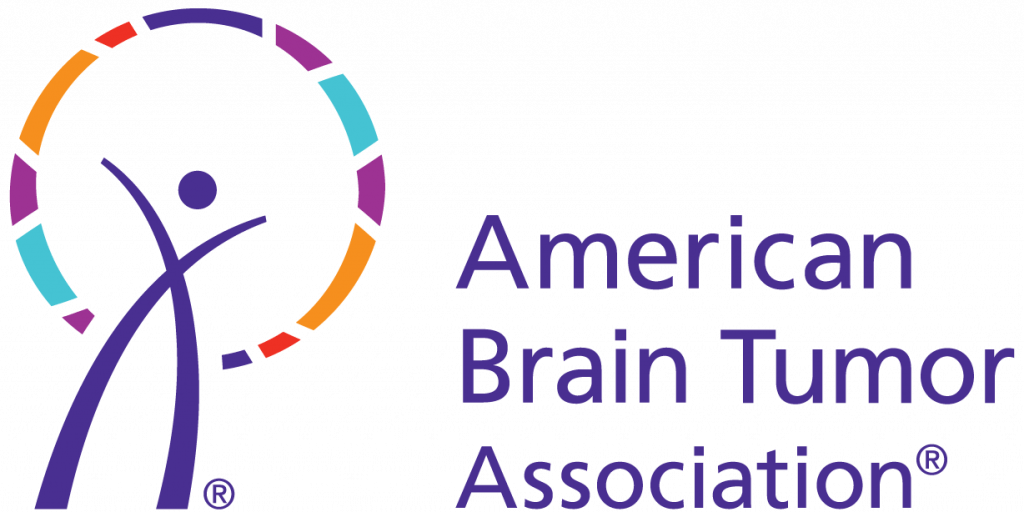Featured Clinical Study
A Dual Phase 1/2, Investigator Initiated Study to Determine the Maximum Tolerated Dose, Safety, and Efficacy of 186Rhenium Nanoliposomes (186RNL) in Recurrent Glioma (CTRC# 12-02)
Study Sponsor: Plus Therapeutics
Study website: https://www.respect-trials.com/gbm/
Study Number: Protocol #12-02 (GBM); NCT01906385
Tumor Type: Histologically-confirmed glioblastoma of one recurrence (Phase 2) or any number of recurrences (Phase 1)
Age Group: Adults
Gender: Female & Male
Study Phase: 1/2
Published Date: 04/19/2024
GENERAL OVERVIEW
Detailed Overview
This clinical trial is evaluating a single dose of 186RNL, a specially designed radioactive drug, given to the patient through a tiny tube placed into the skull by a skilled neurosurgeon. This tube is called a CED, or Convection-Enhanced Delivery, catheter and allows the therapeutic radiation to be delivered directly to the spot of the tumor with minimal or no harmful radiation exposure to healthy brain tissue (unlike traditional external beam radiation therapy).
Phase I of the study is evaluating increasing strengths of the drug’s dose (also known as “dose escalation”) in multiple sets of patient groups (referred to as “cohorts”). For example, three to six different participants are treated at a specific dose, then the dose is increased in the next cohort. Interested participants will first meet with the study’s physician and undergo some standard medical testing to determine if they’re eligible for the trial. Then, the neurosurgeon will perform catheter placement and drug administration. Afterwards, the patient will stay in contact with the study physician for up to 36 months to receive routine scans and medical tests.
The Phase II portion of the clinical study is almost identical to Phase I, but it does not have dose escalation. Instead, this phase uses a certain dose strength found in Phase 1’s 6th cohort to be well-tolerated by most patients. This is called the “non-Dose Limiting Toxicity” (abbreviated as non-DLT) dose, which will allow researchers and regulatory agencies to better understand how well 186RNL consistently fights cancer at the same dose in many different patients.
About 30-40 people will participate in Phase I of this study and an additional 30-40 people will participate in Phase II of this study. Depending on the size and type of your tumor, you’ll be part of the Phase I dose escalation study or the Phase II study.
ELIGIBILITY
Inclusion Criteria
You may be eligible if you:
- Are at least 18 years old and able to understand the risks of the study.
- Have recurrent glioblastoma (confirmed by histology) and within the treatment field volume (20cm^3 for Phase 2).
- Are able to walk about and capable of self-care (ECOG score 0-2 or Karnofsky Performance Status ≥ 60).
- Have a life expectancy of at least 2 months.
- Have acceptable kidney, liver, and hematological (blood) function.
- If you are receiving antiepileptics or corticosteroids, a stable dose (without seizures/progression of clinical symptoms) must be maintained for at least 2 weeks prior to study treatment.
- All women of childbearing potential must have a negative serum pregnancy test and male and female subjects must agree to use effective means of contraception with their partner from entry into the study through 6 months after the last dose.
- Phase 2 only: You must have a tumor volume of less than or equal to 20 cm^3 to be included in the Phase 2 portion of the study and this must be the first recurrence.
Exclusion Criteria
You may not be eligible if you:
- Have acute internal bleeding in the brain or around the tumor (confirmed by MRI or CT scan).
- Unable or contraindicated to take an MRI scan (e.g., has pacemaker or medically unstable).
- Have not recovered from adverse events due to anticancer agents, investigational drugs, or other medications that were administered prior to study (with few minor exceptions).
- Have a serious concurrent illness which would compromise either your safety or the study outcomes (e.g., uncontrolled hypertension, infection, arrhythmias, etc.)
- Have medical conditions that cause an increased risk of bleeding such as inherited bleeding diathesis or coagulopathy.
- Have received any of the following prior anticancer therapy:
o Bevacizumab (Avastin) at any point in time
o Non-standard radiation therapy at the target tumor site (e.g., brachytherapy, systemic radioisotope therapy, or intra-operative radiotherapy)
o Radiation therapy within 12 weeks of screening
o Systemic therapies within 2 weeks before study treatment (e.g., investigational agents and small-molecule kinase inhibitors)
o Non-cytotoxic hormonal therapy within 2 weeks before study treatment (e.g., tamoxifen)
o Biologic agents within 21 days prior to study treatment (e.g., antibodies, immune modulators, vaccines, cytokines)
o Nitrosoureas or mitomycin C within 42 days, or metronomic/protracted low- dose chemotherapy within 14 days, or other cytotoxic chemotherapy within 28 days, prior to study treatment
o Treatment with carmustine wafers
o Currently receiving or have received an investigational agent in 28 days prior to study treatment
- Have cancer progression in multiple areas (multifocal), involvement of leptomeninges, or infratentorial disease.
- Have a psychiatric illness/significant social impairment that would limit your compliance with the study requirements.
- Have a tumor located within 1-2 cm of a ventricle AND it is determined by the surgeon, Principal Investigator, and sponsor to be a risk for drug “leaking” to the subarachnoid space upon catheter placement and drug administration.
STUDY DETAILS
Patient Participation Requirements
While you are taking part in this study, you will be asked to attend approximately 9 visits with the researchers or study staff. The total duration of the active part of the study for each subject will be approximately 31 weeks, divided as follows:
· Up to 5 weeks predose (screening period)
· Up to 6 weeks for surgery, dosing and recovery.
· 4-week evaluation periods for toxicity and disease assessment.
· End-of-study visit within 2 weeks after confirmation of disease progression.
Depending upon the hospital’s standard procedures and your health condition, you may be asked to stay at the hospital overnight during surgery and drug administration. Otherwise, the study visits are expected to be outpatient procedures that take less than a day to complete.
Mechanism of Action
186RNL is manufactured by Plus Therapeutics. Rhenium-186 is a radioactive isotope of the element Rhenium, which means that Rhenium-186 has a different number of neutrons (a type of atomic particle) than a normal atom of Rhenium. These extra neutrons make the Rhenium radioactive (produce radiation). The Rhenium is placed inside a “nano-liposome,” which is a thin, bubble-like membrane that is similar to the same material that makes up the membranes in your cells. The Rhenium-186 in the nanoliposome is the drug that is injected into your tumor.
Possible Risks and Side Effects
This is the first study involving humans to examine the safety of 186RNL in humans with recurrent glioma. We want to find out what effects, good and/or bad, it has on people who receive it as well as what effect, if any, it has on their disease. As the people in this study will be the first to receive the drug, information about its safety and effectiveness in humans is not well known, and not all side effects are known yet.
Possible side effects could result from the radiation of 186RNL, surgical placement of the catheter and administration of 186RNL, super-saturated potassium iodide, allergic reactions, intravenous catheter placement, blood draws, heart test (ECGs), and imaging (MRIs and SPECT/CT imaging).
Specifically, possible risks and side effects related to the radiation from 186RNL that are more likely to occur (20 of 100 participants) are not serious and include scalp irritation, hair loss, dry mouth, and fatigue. Other likely radiation side effects (3-20 of 100 participants) can be serious and include flu-like symptoms, headaches, seizures, brain swelling/fluid “leaking”, and blood clotting. Rare radiation side effects (less than 3 of 100 participants) are serious and include changes in hearing/eyesight/behavior, mental slowness, radiation damage or destruction of normal tissue (which can also result in brain swelling months later), and liver/kidney/spleen toxicity.
Study Compensation
You will receive no financial compensation for taking part in this study, although you will be reimbursed a total of $599 to cover expenses and inconveniences. This reimbursement will be given to you on day 28 of the study in the form of a gift card.
Study Data
In September 2022, Dr. Andrew Brenner of the University of Texas Health Science Center and his colleagues reported initial results of the Phase I recurrent glioma trial. 21 patients across 6 cohorts – all with otherwise very poor odds of surviving their cancer – were given 186RNL. Even though the amount of radiation given significantly surpassed that of traditional external beam radiation therapies, the drug appeared to be safe and well-tolerated by the participants. Furthermore, the amount of radiation absorbed by the tumor and the amount of tumor covered correlated to patient overall survival; in other words, patients who received higher doses of 186RNL to their tumor and more of their tumor treated with 186RNL lived significantly longer on average than those who received lower doses with less tumor coverage.
STUDY LOCATIONS & CONTACTS
Texas
UT Southwestern Medical Center
Dallas, Texas, 75390
Omar Raslan
214-648-6691
Omar.Raslan@UTSouthwestern.edu
The Cancer Therapy and Research Center
at UTHSCSA
San Antonio, Texas, 78229
Epp Goodwin
210-450-5798
MD Anderson Cancer Center
Houston, TX 77030
Sharon Ji
713-745-4243
xji@mdanderson.org




